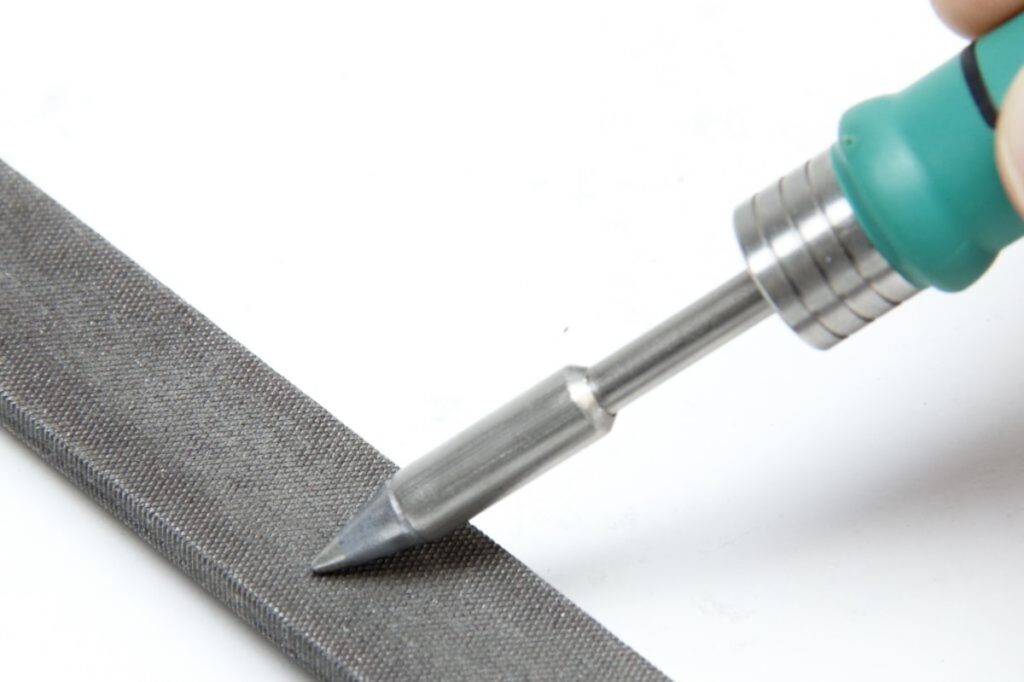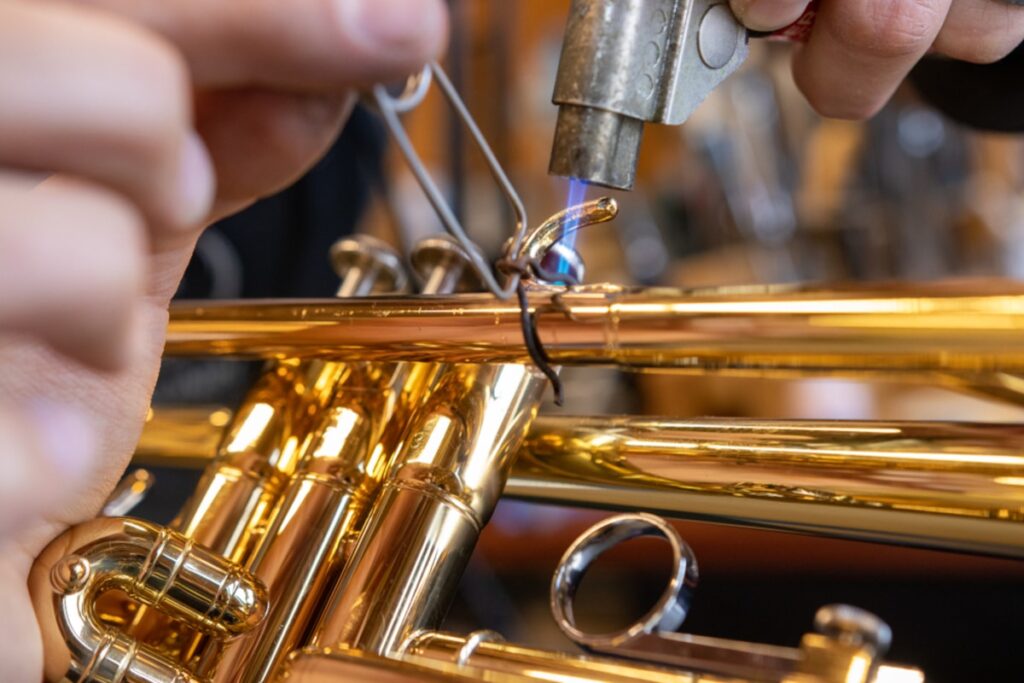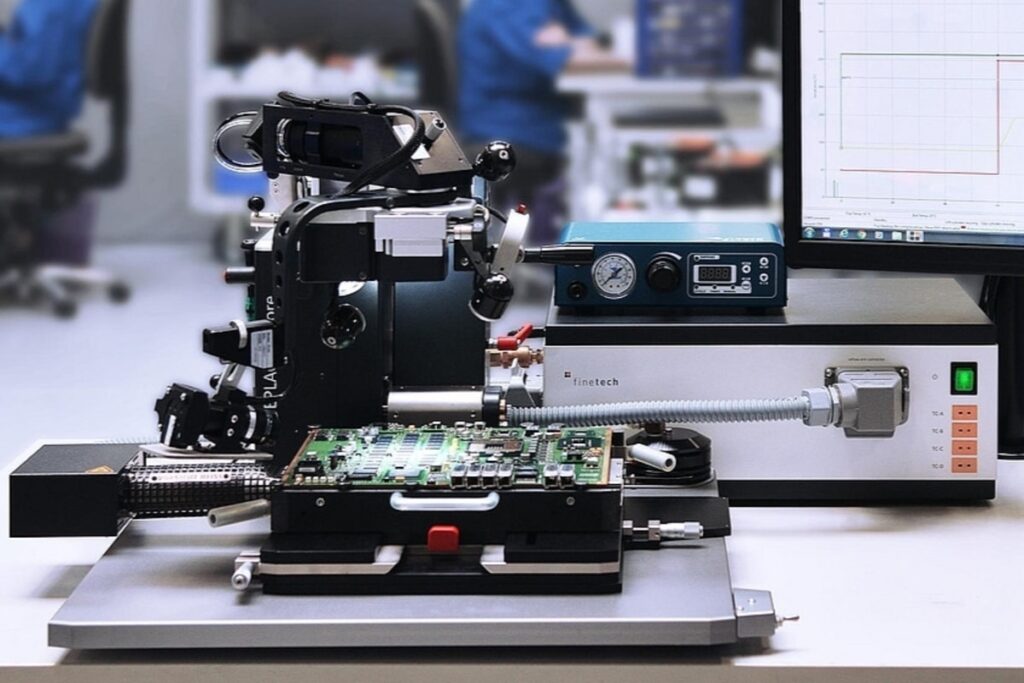When you’re just starting out in electronics work and learning how to solder, it’s tempting to use whatever tools you have at hand to sharpen blunt soldering iron tips.

You could use scissors, knives, sandpaper, anything that gets the job done, but don’t! Instead, here are some reasons why you shouldn’t sharpen the tip of a soldering iron.
It is true that there’s an old saying about “sharpening a pencil and getting ready to work”. But while you may be tempted by this idea, the reality is far more complex.
First off, a soldering iron isn’t a pencil. In fact, good-quality soldering irons are already excellent without any kind of maintenance whatsoever.
Can You Sharpen the Tip of a Soldering Iron?
Avoid sharpening your soldering iron tips. It will wreck them. Copper with iron plating makes up the majority of high-quality tips. Unfortunately, the solder would eat away the copper too quickly, impacting on how well it transfers heat.
So what should you do?
A simple conical tip isn’t necessarily a bad thing.
I primarily use a tip with a simple conical shape for all types of soldering. Due to the absence of a copper serving as a heat sink linked to the pin, dead bug soldering typically requires less heating power.
Fortunately, the tips of most high-quality soldering irons are replaceable.
In addition, several soldering irons feature replaceable tips. Many unique soldering irons are produced by Weller. Several excellent ones, including the well-liked WES51, unquestionably have swappable tips.
The real cost of getting cheap soldering irons is low-quality non-replaceable tips.
Manufacturers also produce inexpensive soldering stations that are intended for price-sensitive customers with little experience with solder. There’s a chance that some of those don’t have replaceable tips.
The soldering station is made at the lowest initial cost possible, even if upkeep costs more in the long run. This is because consumers who buy a $40 soldering station, as it’s less expensive than a $45 soldering station, don’t think about changing tips when they buy it.
What Happens When You Grind a Soldering Iron Tip
But if you still go ahead to grind worn-out or low-quality tips with a file. On the downside, you normally need to do this again after 4 to 7 uses. The tip will eventually become unusable due to being filed too soon.
I do this to obtain large flat tips, which I only seldom require to solder larger components.
3 Reasons Why You Shouldn’t Sharpen the Tip of a Soldering Iron
1. Wears the Tip of a Solder Iron
Sharpening wears down the tip of the tool, making it weaker. This happens because, during each pass across the grinder wheel, the tip only has its outermost few millimeters ground away.
If you look closely at most high-end soldering irons, you’ll see that the tip is actually pretty thick near where it meets the handle (this is also known as the nose). When you grind the whole thing off, all you end up doing is grinding away the very tip.
And while you might think that this won’t make much difference, it does. After several passes through the grinder, a worn tip becomes thinner and less effective. Even worse, after repeated re-grinding, the tip eventually breaks completely apart!
2. Causes Poor Contact Between Components
Grinding the tip of a soldering iron can cause poor contact between components. When you heat the tip of a soldering iron, it expands slightly due to friction with air molecules around it.
As soon as you touch two conductors together, however, the expanded tip presses against both surfaces, simultaneously creating pressure points along the joint.
At these locations, no gap exists between the tip and the conductor, meaning that the current cannot flow smoothly.
3. Results in Wasted Energy
Every time you apply power to a circuit board via a soldered connection, part of the electricity goes unused. Specifically, since the tip doesn’t press hard enough to create a proper seal, some of the electrical field surrounding the conductor leaks outside of the joint, causing waste.
Worse still, given that electricity travels faster under lower resistance, the leaky area generates extra heat that harms other nearby connections.
If you want to reduce this problem further, check out this article explaining how to optimize your soldering joints. We recommend waiting a little bit longer before applying additional thermal paste to your joints—especially if those joints involve heating elements like LEDs.
Note
Although the above problems occur regardless of whether you sharpen your own tips or buy new ones, many low-end manufacturers choose to sell faulty products that break easily simply because they have an underdeveloped quality control unit.
You are probably now wondering what the lifespan of a soldering tip is.
How Long Do Soldering Iron Tips Last?
After prolonged use, even premium soldering stations like Weller and Hakko become darker. However, as long as the tips remain shiny and the heating elements don’t break. They often have a long lifespan.
As for cheap ones, well, you get what you pay for. I’ve purchased inexpensive soldering irons that, after being used a couple of times, only last a week.
How Do I Make Soldering Iron Tips Last Long?
1. Wipe the Tip Only When Necessary
Years back, a friend informed me that the main factor contributing to their premature wear and tear was wiping tips.
I may have cleaned the tip of the soldering iron on my workbench two or three times over the course of the past year. I am aware that this topic is debatable, and all I am providing are my personal observations.
2. Drop the Power to the Tip
Drop the power to the tip in order to lengthen the lifespan of your heating element and tip. I keep mine just hot enough to carry out fast soldering tasks by running it via a circuit that dims electric lamps.
The iron may “rest” at lower temperatures and continue to function without extra warming up. Thanks to irons with a significant thermal mass around the tip.
3. Insert a Diode in Series
Inserting a diode in series with the power on some irons reduces the power enough to prolong the life of the iron and tip while keeping it warm enough to perform some tasks.
Below you’ll find instructions for maintaining the tips of your soldering iron. Note that if yours are particularly bad, professional help may be necessary.
How to Care for Your Soldering Iron
Clean the Soldering Iron
Use a toothpick to clean small bits of dirt stuck inside the tip of your soldering iron.
Clean up residue buildup on your soldering iron tips with a damp cloth dipped in white vinegar. Do this every couple weeks.
Lubricated the Tips of the Soldering Iron
Keep your soldering iron tip lubricated with oil. Use either mineral oil or grease, depending on your preference. Avoid WD40-type oils as they’ve been found to cause unwanted side effects in electronic circuits.
Don’t let your tip dry out though, otherwise, it may crack. Once per year is sufficient.
Cover Them Carefully
After cleaning, protect your soldering iron tips from oxidation by covering them carefully with tin foil. Alternatively, wrap the entire iron in waxed paper.
Vacuum With Compressed Air
You should always keep your soldering irons free of dust and debris. To do this safely, wear a face mask and vacuum with compressed air instead of vacuuming. Also, avoid breathing fumes from flux cleaner sprays.
Verify Whatever Information You Receive
Many beginners get carried away and spend too much effort trying to improve their skills. They take everything they learn online and try to put it into practice immediately, often neglecting crucial steps like keeping their irons free of dust.
Things to Do When Using a Solder Iron
Doing things right takes time, and if you rush ahead, you risk damaging your soldering iron permanently. So relax, enjoy the journey, and follow these simple suggestions:
The Bottom Line
Whether you decide to spend money on professionally prepared tips or save some cash and give them a quick polish yourself, always remember that maintaining your soldering irons is critical to ensure maximum performance and reliability.
Failure to care for your soldering iron tips thoroughly can result in serious accidents—including fires.
We hope you learned something useful today! For more information, please refer to our complete guide on soldering.
Darell is a Certified Welding Engineer (CWEng) with over 23 years of expertise in TIG, MIG, MAG, dual flux, and stick welding. He is a senior welding engineer who has a desire to share his experience. Visit unwelded.com and join Darell as well as other welding enthusiasts in obtaining fabrication knowledge, amazing welding gadgets, and useful welding insights.

